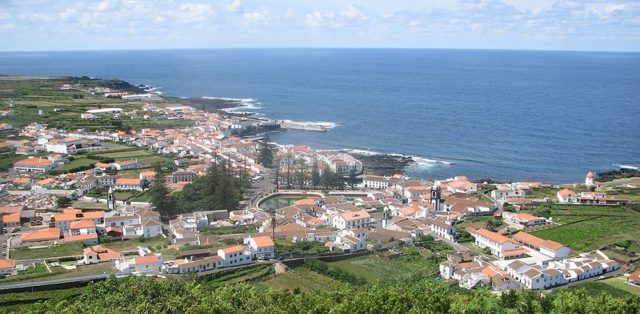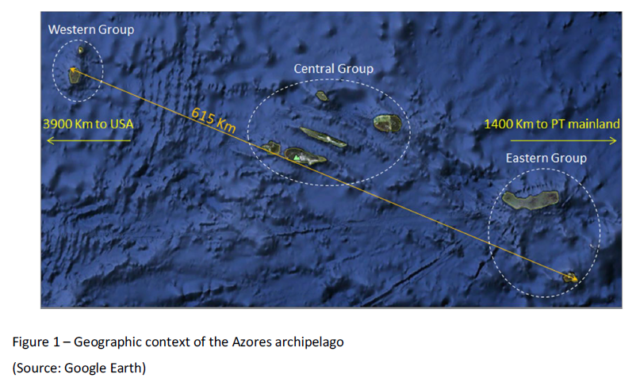
*Credit: Portuguese-American Journal
The multiple prospective advantages and benefits of renewable energy microgrids are increasingly being recognized the world over, in particular among island nations and communities. European islands have made international headlines during the past few years as they strive to shift from fossil-fuel-based to distributed renewable energy resources.
Microgrids are playing a growing role in these efforts. On May 3 Portugal’s Prime Minister Dr. Antonio Costa joined the President of the Azorean Government Dr. Vasco Cordeiro and other high-level officials on a tour of what’s billed as the world’s first megawatt-scale, grid-forming renewable energy system.
The 100% renewable energy island microgrid being constructed on the Azorean island of Graciosa by Germany’s Younicos, Switzerland’s Leclanché and Danish majority investor Recharge is designed to reduce islanders’ use of fossil-fuel-fired power an average 65%. That reduction will enable Graciosa’s residents to save millions of euros per year on fossil-fuel imports and dramatically reduce their greenhouse gas (GHG) emissions, Younicos highlights in a news release.
Kicking the Fossil Fuel Power Habit

*Credit: Sustainable Energy Action Plan, Azores Archipelago 2012
“We are honored to host these distinguished officials and guests and give them an up-close look at the future of renewable energy-based systems,” Younicos CEO Stephen Prince states. “This island is breathtakingly beautiful – even more so now that its electricity can be generated primarily from abundant natural resources like wind and solar. Our intelligent software controls are the key to capitalizing on renewables, maintaining grid resilience, reducing emissions and saving money.”
To date, project partners have deployed a 1 MW solar photovoltaic (PV) power plant and 3.2 MWh Leclanché lithium-ion-battery-based energy storage system on Graciosa. Currently under construction, a wind power park will add 4.5 MW of emissions-free power generation capacity to the island’s renewable power grid.
Once completed – this summer according to project plans – Younicos’ software and controls will manage storage and dispatch of electrical energy to and from Leclanché’s Li-ion BESS in order to balance short-term fluctuations in grid power. In sum, the platform will enable islanders to meet all their power needs by capitalizing on Graciosa’s wind and solar energy resources, according to Younicos. ¨Diesel-fueled power generation capacity will only be needed for back-up power during prolonged periods of unfavorable weather,¨ the company explains.
Raising the Practical Limit for Grid Integration of Renewable Power Generation
Younicos began researching and developing renewable energy microgrid systems eight years ago, company spokesperson Philip Hiersemenzel recounts in an interview. The results of its research were viewed skeptically by industry participants at first. That’s changing rapidly as utility-scale microgrids such as that on Graciosa are being built, refined, and proven in the field.
Renewable energy microgrids such as Graciosa’s will raise the practical limit of incorporating renewable power generation assets on power grids from 15-30% to 60-80% or more, Hiersemenzel says.
Younicos and leading industry peers have pretty much solved the challenges associated with incorporating variable, or intermittent, solar or wind power generation on to grid systems, he continued. The key remaining challenge has been maintaining grid stability and what’s known as ¨must-run¨ generation capacity.
Younicos and partners believe their grid-forming renewable energy system solves this problem, substituting renewable power generation, intelligent, adaptive BESS, and smart grid distribution for fossil-fuel or nuclear-fueled peak, spinning and emergency reserve power generation capacity grid operators and utilities have traditionally relied on.
The project partners are confident Graciosa’s island-spanning renewable energy microgrid will live up to, if not exceed, expectations. ¨Once people see how well this works, I think we’ll see an enormous number of projects worldwide,¨ Hiersemenzel says.
